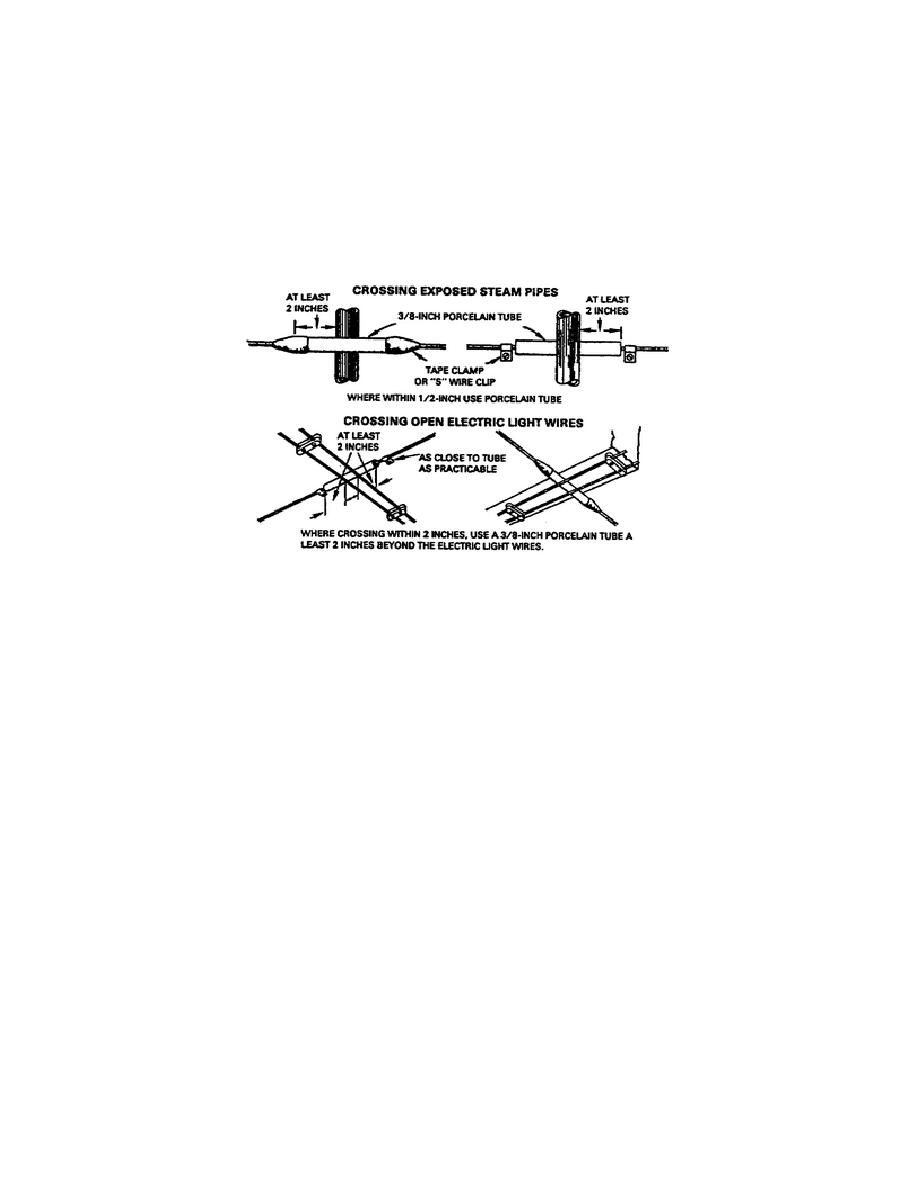
2.
Minimum clearances and protection.
a. Clearances. Maintain clearances of at least 6 inches between telephone wiring and foreign
ground wires. When it is convenient to run wire outside a building from the station side of the protector,
or when it is convenient to run wire outside the building to an extension station ringer, separate interior
wiring extending outside the building from the line wire by at least 2 inches and from electric service
wires by at least 6 inches. When proper clearances cannot be obtained, protect the wire as show in
Figure 49.
Figure 49. Crossing exposed steam pipes.
b. Don't place wire in a pipe, conduit, or compartment containing electric light or power wires.
Unless the telephone wire is separated from the electric light and power by a suitable partition, don't
place telephone wire in the same outlet box, or similar fitting or compartment, with electric light and
power wires. If the power wires are introduced into an outlet box, junction box, or compartment solely
for power supply to signaling equipment or for connection to remote control equipment, the telephone
wire need not be separated from power wires by a partition. It is permissible to place telephone wire in
the same conduit or runway with signaling wire if the voltage for operating the signals does not exceed
48 volts.
3.
Protection. Run wire from the telephone protector, connecting block, or cable terminal so that
the wire is not exposed to injury, and so that the run is short and neat.
a. Protect wire with two layers of friction tape, half-lapped and reversed, where wire is run in
back of fire shutter or fire screen, across metal beams, through gratings, over any metal obstruction
(such as cable), or over sharp corners. Protect wires passing through floors as shown in Figure 50.
55



 Previous Page
Previous Page
